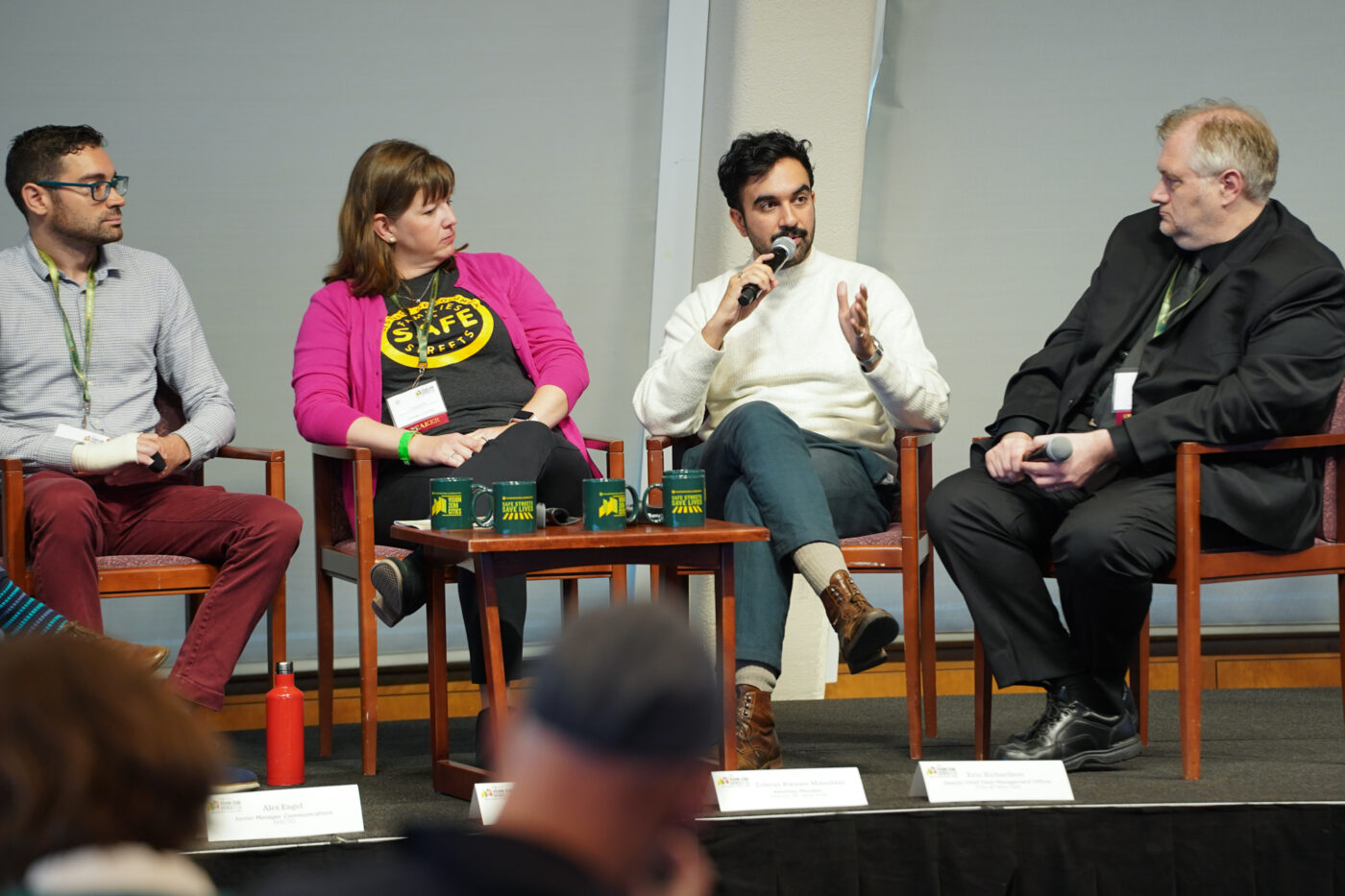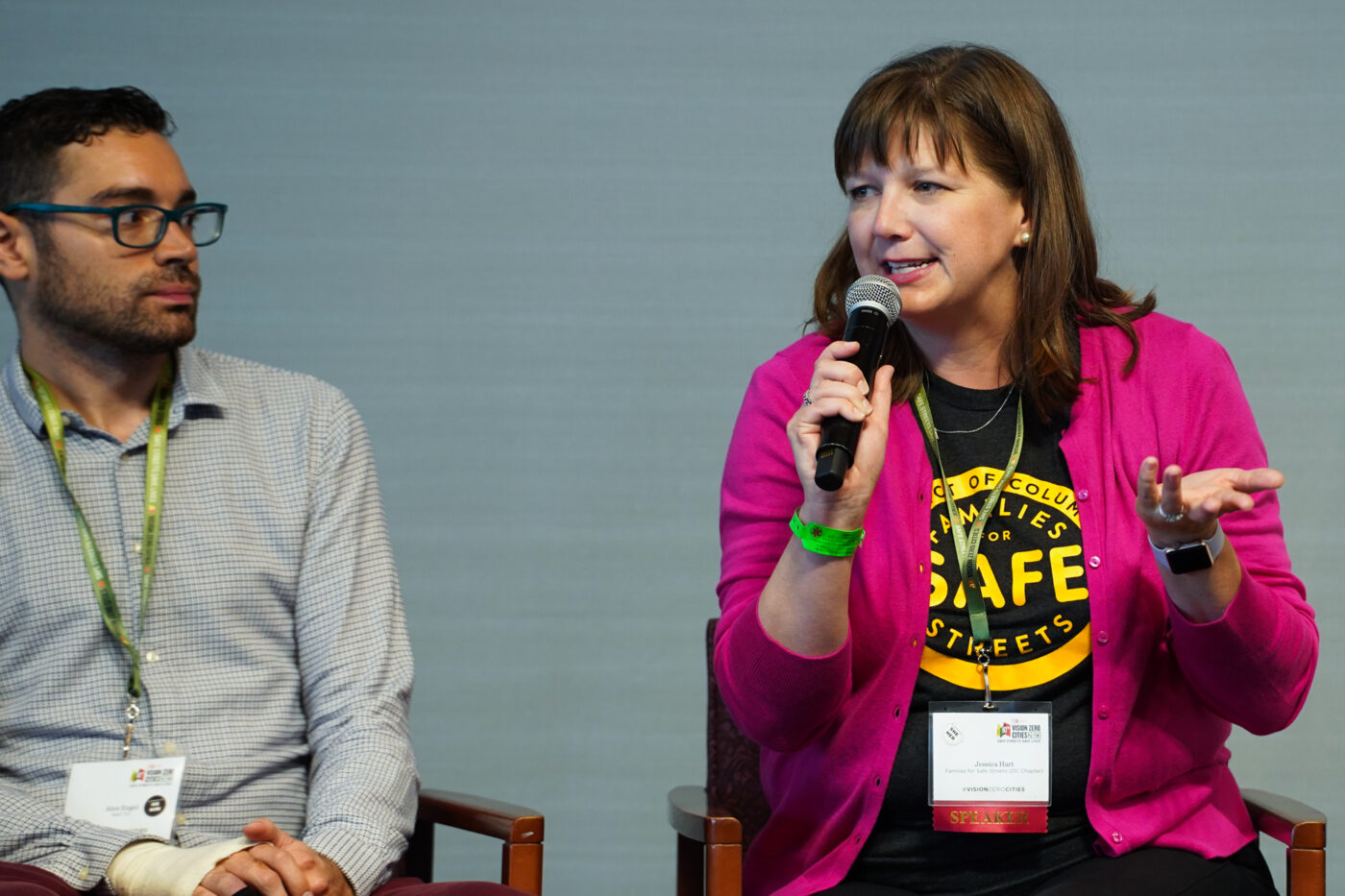“It is a sad fact, but you make a lot of money making cars that can kill people. And so we cannot hope that they change — we have to force them to do so.”
— Zohran K Mamdani, NY assembly member
There’s growing talk in advocacy circles about the need to regulate large vehicles. Right now, the auto industry is bathing in profits from selling absurdly-sized vehicles that are much more likely to kill and maim. With federal government regulation at least a decade off, it will be up to cities and states to take the lead and reclaim their streets from these unnecessarily large SUVs and trucks.
Before today I’d only heard concerns about this topic from transportation policy wonks and activists. Now I know there’s at least one elected official who’s not only serious about the issue from a legislative perspective, but who isn’t afraid to speak about it in strong and clear terms.
New York Assembly Member Zohran K Mamdani (who represents District 36, the neighborhoods of Astoria, Ditmars-Steinway, and Astoria Heights) was on a panel titled, Supersized SUVs, Mega Trucks, and Regulatory Failure.
Mamdani is frustrated by federal inaction and has introduced a bill that would tax vehicles based on weight. He wants to disincentive the purchase of vehicles that have, “a direct link to a higher likelihood of killing children and people on the streets.” “It’s up to us to make it clear to New Yorkers,” he said, “that when they purchase a vehicle of a certain size and a certain weight, that comes with an additional cost. And that cost should be a fiscal cost, not just a moral cost.”
Mamdani speaks with a candor that’s rare among elected officials (he even dropped an “F” bomb at one point). On the auto industry, he said:
“What we have is an industry that is almost entirely unregulated, that is pushing larger and larger vehicles, tying into notions of masculinity… vehicles that can’t even fit inside parking spots! And yet for some reason, they will continue to be allowed to be sold.”
Can government influence market forces? Mamdani thinks so:
“I often think about the development of the mini-fridge, and how that is closely tied to NYCHA [New York City Housing Authority] putting out an RFP [request for proposals] about this, saying, ‘These are the parameters they need for their housing units.’ And then that is what led to this this creation of the mini-fridge, that now we think of as market-driven and it is everywhere in our society. The state has a role in incentivizing the way in which the market acts. If the state puts additional costs on certain sizes of vehicles, then I think that it creates an opening for there to be smaller vehicles… I believe if there’s a clash between the market and the state, the state can and should win.
You must try and influence the market itself, because the market is driven only by profit. And it is a sad fact, but you make a lot of money making cars that can kill people. And so we cannot hope that they change — we have to force them to do so.”
Mamdani was joined on the panel by: Alex Engel, senior manager of communications at NACTO (National Association of City Transportation Officials); Jessica Hart with Families for Safe Streets; and Eric Richardson, the deputy chief fleet management officer for the City of New York. The panel was moderated by Transportation Alternatives Executive Director Danny Harris.
While Mamdani is focused on hitting consumers’ pocketbooks, Engel with NACTO says street design can also influence buying decisions (and in turn, what automakers build and sell):
“We’ve seen in our experience that the by far the most effective mechanism for reducing traffic deaths is street design. Even with vehicles getting bigger, if the vehicles are moving slower, if they’re having to drive more carefully, if you don’t actually have a way to speed into someone or go through a crosswalk, you’re going to make your streets safer.
… there are some mechanisms you can use, like narrowing lanes, making sure that turns are tighter, using real concrete barriers… We receive photos all the time from members who say that put up this concrete barrier and now all these vehicles are getting stuck on the concrete barrier. And we’re like, ‘Yes, that’s the point!'”
You don’t need a political or policy background to support more regulation of oversized trucks and SUVs.
“I’m here because I don’t like big vehicles, I think that they are horrible and deadly and unnecessary,” said Jessica Hart, after sharing with the audience that her five-year-old daughter Allie was killed in 2021 by the driver of a large van while biking in a crosswalk.
Hart has channeled her grief into a campaign to revise the federal New Car Assessment Program (NCAP) star rating system so that it takes into account how safe a vehicle is for people who are not inside of it. Her petition on Change.org has 35,000 signatures so far, and she hopes to push to 42,000 — the number of road deaths in America the year Allie was killed.
NACTO, a group with a member list that includes hundreds of planners and engineers from 100 of America’s largest cities, is behind Hart’s proposal. Engel said they’re lobbying the National Highway Transportation Safety Administration (NHTSA), but they’re a long way from major breakthroughs. So in the meantime, they’re focusing on educating car buyers. “We’re trying to show that a five star rating does not belong in a vehicle that’s much more likely to kill someone.”
One of the thorny problems with this issue is how cars and trucks are sold. Eric Richardson with City of New York, shared a jaw-dropping story that has led them to pressure car companies to decouple luxury and safety. “If I walk into a dealership, I should be able to get the highest safety package I can get, without having to pay for heated seats, massaging seats, a sunroof, a five CD changer, you know, it goes on and on and on.”
“We receive photos all the time from members who say that put up this concrete barrier and now all these vehicles are getting stuck on the concrete barrier. And we’re like, ‘Yes, that’s the point!'”
– Alex Engel, NACTO
On one occasion, Richardson was negotiating the purchase of several vehicles for the city fleet and asked for the package with the highest level safety trim. “I was told, the only way we could get it is if they put TV screens on the back seats. And I’m like, ‘Wait a second, I’m in city government, nobody’s going to use those TVs… So we ended up actually pulling them out when the vehicle got delivered, but we paid for them because they were part of the safety package.”
All this though talk around big SUVs and mega-trucks plays well at a Vision Zero conference in Manhattan; but the issue will likely stoke serious pushback among many Americans. That’s why, for the politician Mamdani, an anti-car framing might not be the best approach.
“I think that there’s a ceiling if all of these fights are framed as the ‘war on cars,’ Mamdani said. “I think there’s a lot more possibility if it is framed through the lens of safety.” He cautioned against framing it as a moral choice and said to resist engaging in culture wars. “What if our city government just did an advertising campaign saying, ‘How long would it take you to find parking if your vehicles was this big [holding his close together]? And how long would it take to find parking if your vehicle was this big [holding hands further apart]?’ Right? I think time is money — especially in New York.”
— Part of BikePortland’s special coverage from the Vision Zero Cities Conference in New York City, hosted by Transportation Alternatives. See more stories here.




